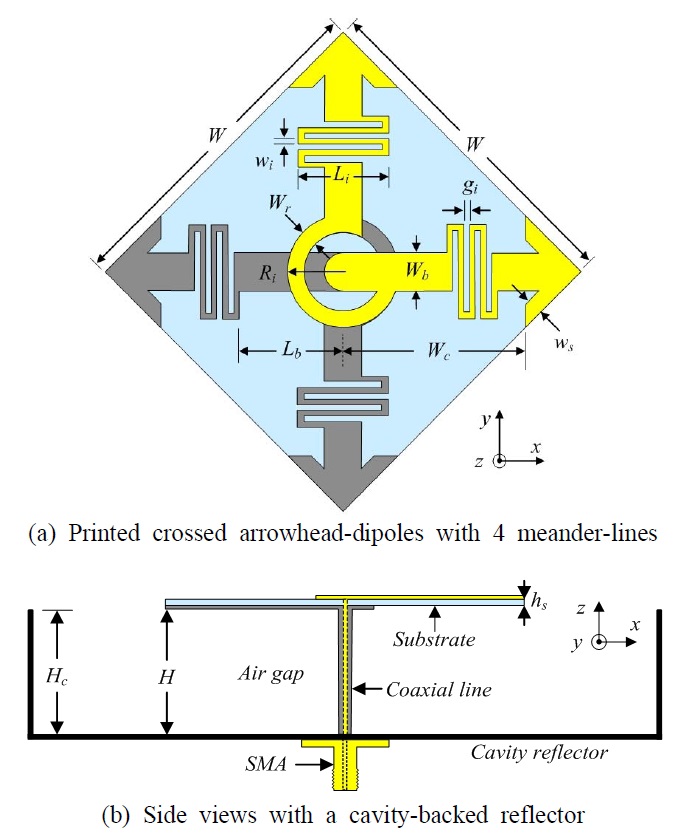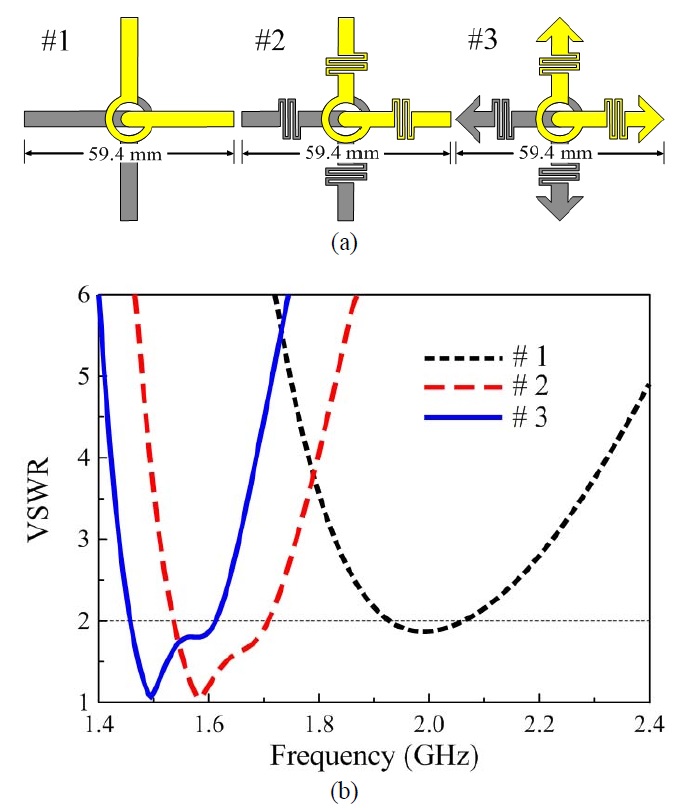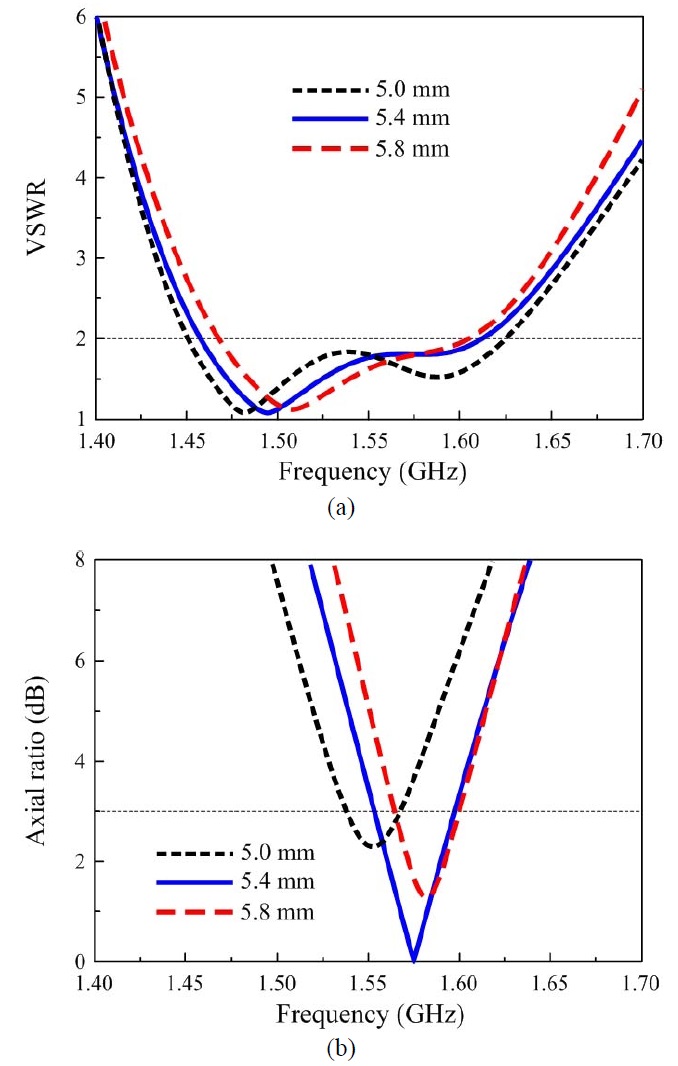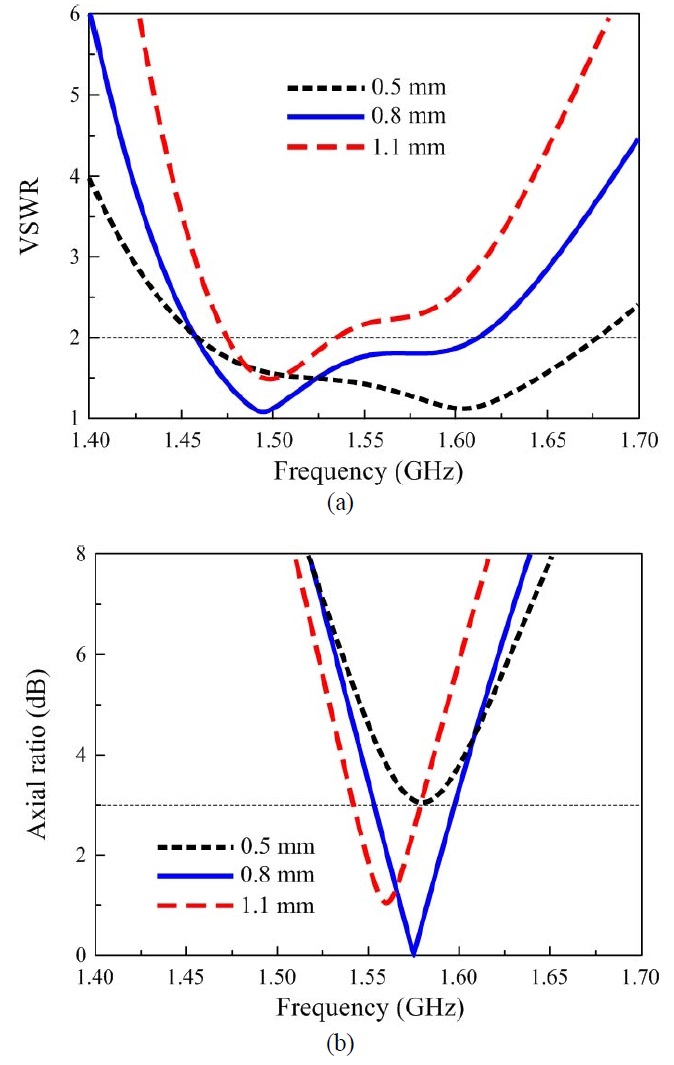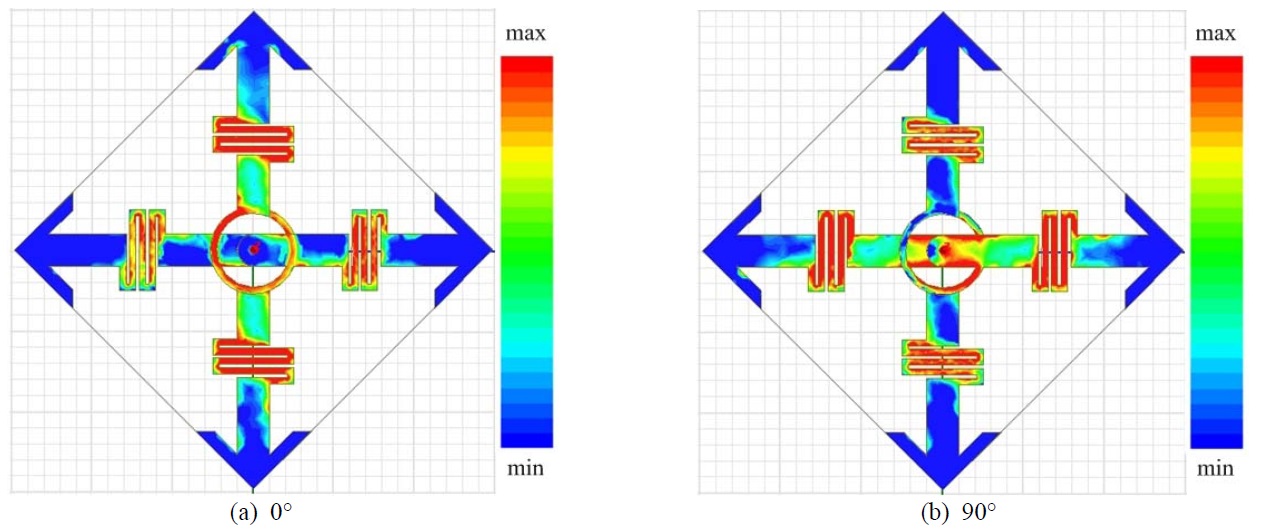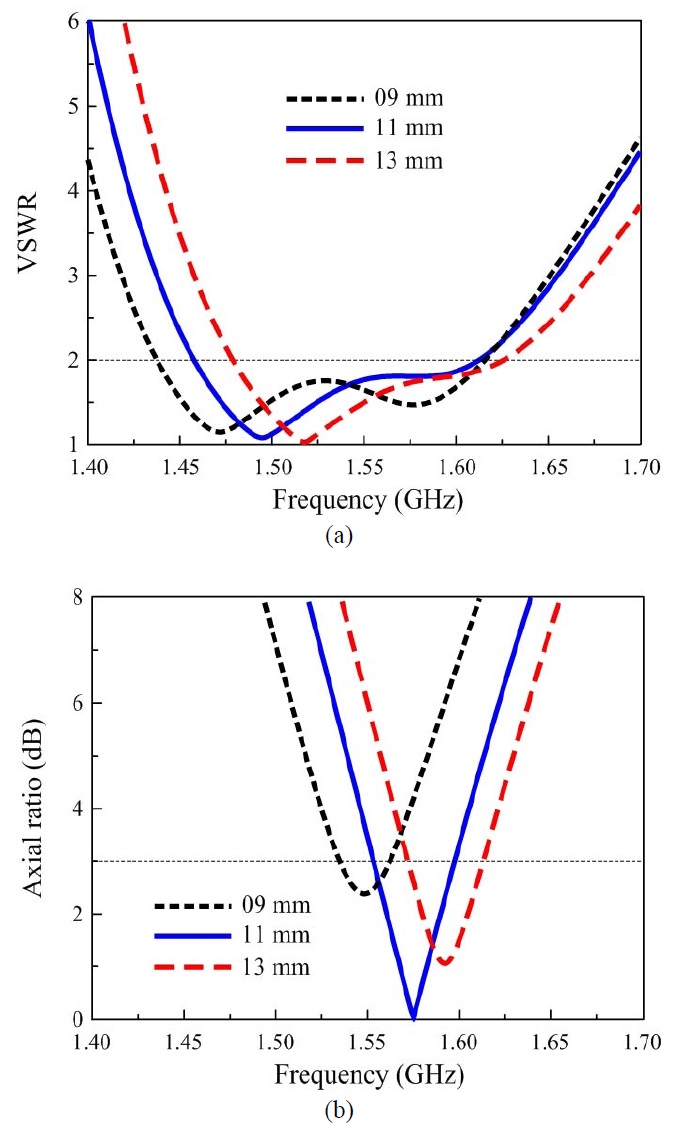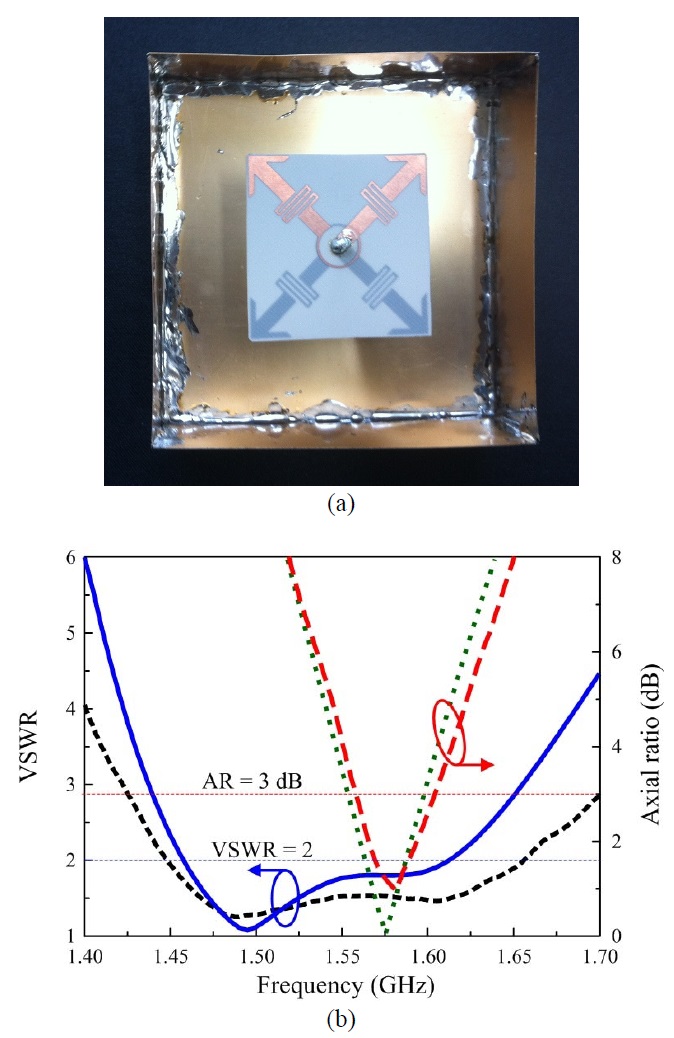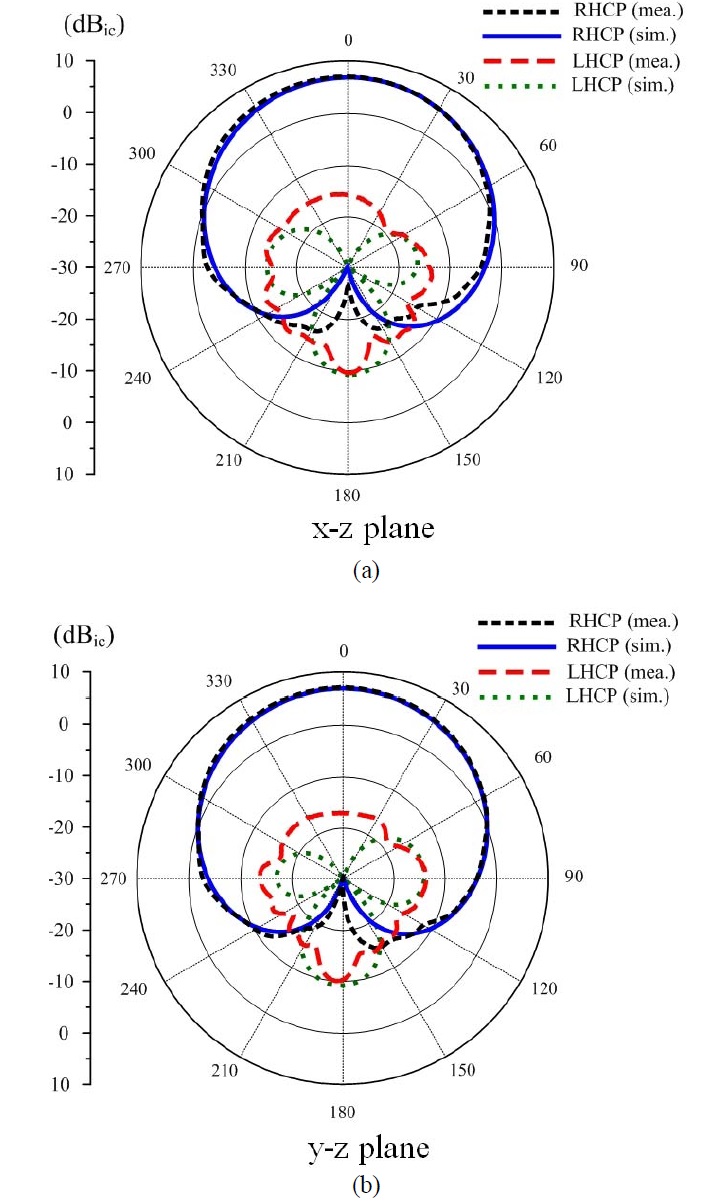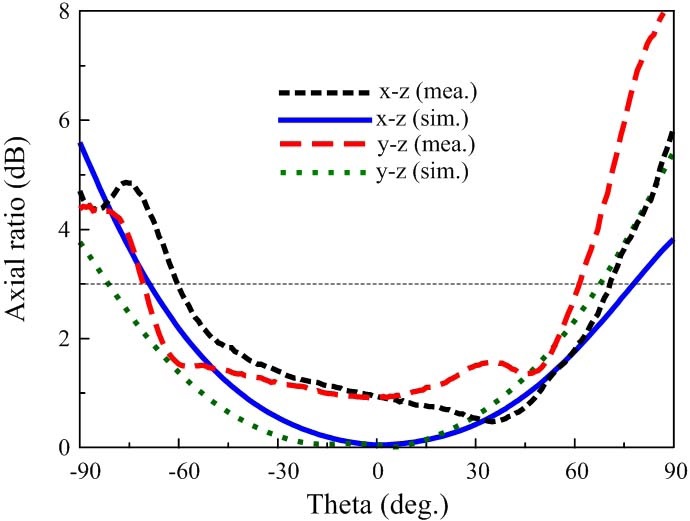



In this paper, we present a circularly polarized (CP) composite cavity-backed crossed dipole antenna for global positioning system (GPS) applications. We produce the CP radiation by crossing two dipoles through a 90° phase delay line of a vacant-quarter printed ring, which also has a broadband impedance matching characteristic. Two techniques, insertion of meander lines in the dipole arm and arrowhead-shaped trace at its end, are employed to reduce the sizes of the primary radiation element. The compact radiator is backed by a cavity reflector to achieve a wide CP radiation beamwidth. The proposed antenna exhibits a measured bandwidth of 1.450~1.656 GHz for a voltage standing wave ratio (VSWR) < 2 and 1.555~1.605 GHz for AR < 3-dB. At 1.575 GHz, the antenna has a gain of 7 dBic, a frontto- back ratio of 27 dB, AR of 1.18 dB, and 3-dB AR beamwidths of 130° and 132° in the x-z and y-z planes, respectively.
The global positioning system (GPS) is the most popular member of Global Navigation Satellite Systems (GNSS) that provide location and time information about user in anywhere on the Earth [1]. GPS universally utilizes circularly polarized (CP) radiation due to Faraday rotation when signals pass through the ionosphere. In particular, GPS receiver antennas are required to have right-hand circular polarization (RHCP), a wide 3-dB axial ratio beamwidth that faces the sky, and a high front- to-back ratio to avoid interference from the ground. Various types of CP antennas were introduced to operate at GPS bands, including the microstrip antennas [2], [3], near-field resonant parasitic antennas [4], [5], crossed dipole antennas [6], and pinwheel-shaped planar monopole antennas [7]. However, most of these designs essentially focused on the CP generation or 3-dB AR bandwidth enhancement rather than improvement of the 3-dB AR beamwidth. Recently, several techniques for widening the CP radiation beamwidth have been reported, such as a pyramidal ground structure with a partially enclosed flat conducting wall [8], an auxiliary radiator [9], applying higher order modes [10], loading gaps and stubs on the patch [11], and a microstrip-monopole combination [12].
In this paper, a compact composite cavity-backed crossed dipole is introduced as a simple way to improve the CP radiation beamwidth. The proposed design utilizes a cavity-backed reflector not only to render a unidirectional pattern but also to improve the CP radiation in terms of 3-dB AR bandwidth and beamwidth. For a compact size of radiator, two techniques are employed: insertion of meander lines in the dipole arm and shaping of the dipole arm end into arrowhead [4]. A vacantquarter printed ring is used as 90° phase delay line of crossed dipoles to produce CP radiation [6].
Ⅱ. Antenna Design and Characteristics
Fig. 1 shows the geometry of the compact composite cavity-backed crossed dipole. The antenna was comprised of two printed dipoles, a cavity reflector, and a coaxial line. The cavity was a rectangular box with a dimension of 90×90 mm and a height of
Fig. 2(a) illustrates the process of antenna design; the initial design (design #1) was two straight dipoles crossed through the vacant-quarter printed ring. Four meander lines were then symmetrically inserted into the dipole arms (design #2). Finally, each dipole end was shaped like an arrowhead (design #3). Note that all design #1~3 were built on both sides of the 42×42 mm Rogers RO4003 substrate (
The vacant-quarter printed ring was not only employed to produce CP radiation, but it also allowed the broadband characteristic. These capacities are observed in Figs. 3 and 4, which show simulated VSWR and AR of the antenna as a function of frequency for different radii (
The proposed antenna employs meander lines to reduce the dipole length. The trace width of the meander lines (
Ⅲ. Measured and Simulated Results
The composite cavity-backed crossed dipole antenna was fabricated and measured. The planar crossed arrowhead dipoles were built on both sides of a Rogers RO- 4003 substrate with a copper thickness of 20
Fig. 8 shows the 1.575 GHz radiation patterns of the antenna with RHCP, symmetrical profile, and wide beamwidth in both x-z and y-z planes. The RHCP, in particular, can be interchanged with the LHCP by reversing the vacant-quarter printed ring. The measurements yielded a gain of 7 dBic, a front-to-back ratio of 27 dB, and 3-dB beamwidths of 104° and 105° in the x-z and y-z planes, respectively. Fig. 9 shows the simulated and measured AR of the antenna versus theta angle at 1.575 GHz. The measured 3-dB AR beamwidths were 130° and 132° in the x-z and y-z planes, respectively. The simulated beamwidth for 3-dB AR were 145° and 148° in the x-z and y-z planes, respectively. The CP radiation beamwidth was slightly narrower for the measurements than for the simulations. This could be attributed to the substrate bending effects.
A CP composite crossed dipole was introduced for use in GPS with broadband characteristics (1.45?1.65 GHz for VSWR < 2 and 1.555~1.605 for AR < 3) and wide beamwidth radiation (>100º for 3-dB beamwidth and > 130º for 3 dB AR beamwidth). A vacant-quarter printed ring was used as the 90º phase delay line to produce CP radiation. Arrowhead dipoles and meander lines were employed for a significant reduction of the radiator sizes. The cavity-backed reflector was utilized not only to achieve a unidirectional radiation pattern but also improve the CP radiation beamwidth. The proposed wide beamwidth antenna can be widely applied to GPS purposes, as well as to satellite communications.
